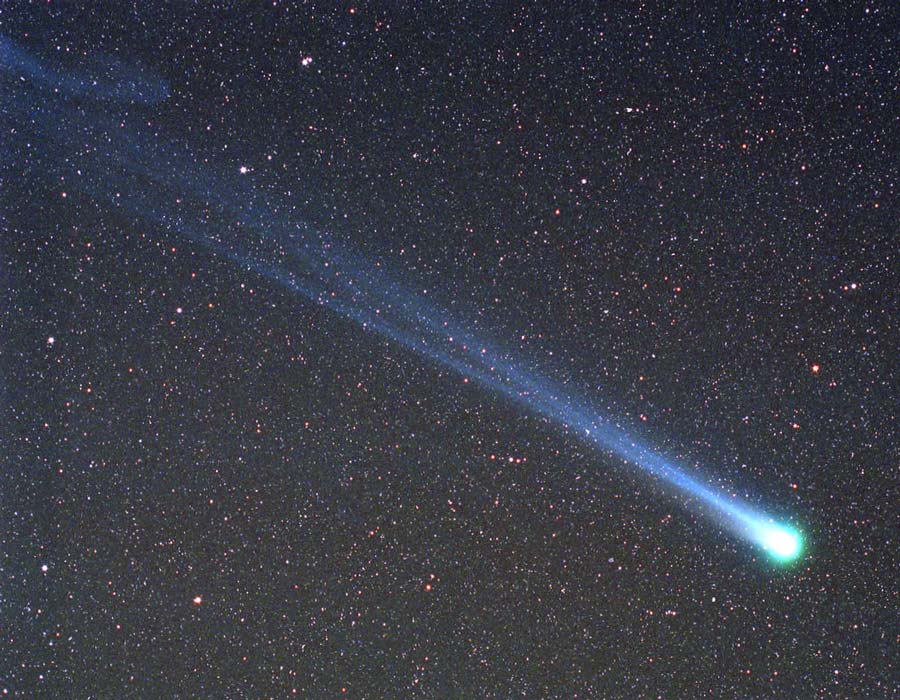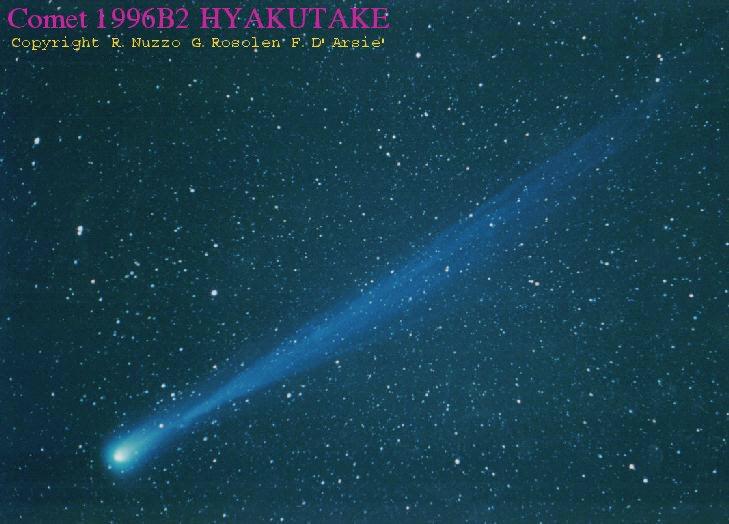This web page is created within BALTICS project funded from the European Union’s Horizon2020 Research and Innovation Programme under grant agreement No.692257.
Comet Hyakutake
Another comet of the long period is the Comet Hyakutake (C/1996 B2), which was discovered on January 31, 1996 by the amateur astronomer Yuji Hyakutake. Comet hunting has been his hobby for years. The amateur discovered the Comet Hyakutake using binoculars. Interestingly, a few weeks ago, in the same celestial area, Yuji Hyakutake discovered another comet that was invisible to the naked eye.
Orbit calculations indicated that the comet would pass very close to Earth. It is probably not the first time it has arrived in the inner region of the Solar system. This gave hope that the comet’s activity would be stable and could be relatively bright and visible to the naked eye.
As early as the beginning of March 1996, a comet in the northern hemisphere could be seen with the naked eye, but it was not very bright. In mid-March, its observed star size reached only a quarter and its tail was relatively short.
As the perihelion approached on May 1, the comet became brighter. Its tail was about 100
degrees long at the maximum (bend your fingers in the fist, stretch your hand – it takes about 10 degrees in the sky). On March 25, a comet passed the Earth 0.1 astronomical units away. Its movement across the sky was easy to see, just watching the object in the sky for a few minutes.
The Comet Hyakutake failed to make such a stir as the Comet Hale-Bopp, which retained its brilliance for only a few days. Many Europeans did not see it at all because the sky was covered with clouds.
The next visit to the central areas of the solar system is not expected until 70,000 years later, because in 1996 its orbit was changed by the gravity of the big planets. The orbital period has
been extended from 17,000 years to at least 70,000 years.
Ethane and methane were detected in comet exhausts from Earth observations. However, the composition of water in the comet is relatively close to that found in the Earth’s oceans.es okeānos.
One of the most interesting discoveries related to the Comet Hyakutake was made by accident. At that time, a joint project between NASA and the European Space Agency, the Ulysses
spacecraft, was in orbit around the Sun to study the Sun. In 1998, analyzing data from the spacecraft, scientists discovered that in the spring of 1996 it flew through the tail of one comet.
Only in 2000 it was discovered that the guilty comet was the Comet Hyakutake. This means that the comet’s tail stretched 570 million kilometers (the Earth is about 150 million kilometers from the Sun).





















